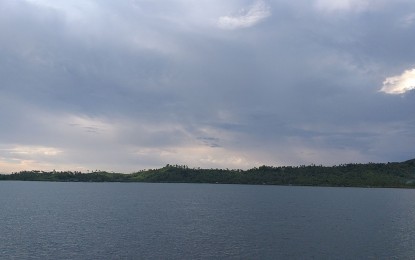
RED TIDE. A portion of San Pedro Bay in Basey, Samar. Red tide phenomenon has recurred in two bays in Samar province largely due to changing weather patterns and erosion, the Bureau of Fisheries and Aquatic Resources reported on Wednesday (Sept. 29, 2021). (PNA file photo)
TACLOBAN CITY – Red tide phenomenon has recurred in two bays in Samar province due to changing weather patterns and erosion, the Bureau of Fisheries and Aquatic Resources (BFAR) reported on Wednesday.
The latest seawater samples collected along San Pedro Bay in Basey, Samar, and Cambatutay Bay in Tarangnan, Samar are positive of pyrodinium bahamense, a toxic microorganism that causes paralytic shellfish poisoning (PSP).
The sustained warm weather in the past weeks and soil erosion coming from large river systems during rainy days are the two major factors that triggered the recurrence of the red tide phenomenon in these two bays, BFAR Eastern Visayas regional director Juan Albaladejo said.
“The run-off from upland has caused the red tide-causing cyst to resurface and bathe with the organic matter from the sediments resulting in sudden bloom,” Albaladejo said in a phone interview.
San Pedro was declared free from red tide on Sept. 11 while Cambatutay Bay became toxin-free on July 1.
Also included in the current red tide positive areas are the coastal waters of Guiuan, Eastern Samar; Irong Irong Bay in Catbalogan City, Samar; and Cancabato Bay in Tacloban City.
Fish, squid, crab, and shrimp gathered from these areas are safe to eat provided that all entrails are removed and washed thoroughly with running water before cooking.
The BFAR asked local government units to heighten their watch against gathering, trading, and consumption of shellfish to prevent the incidence of PSP.
PSP occurs from ingesting bivalve shellfish, such as mussels, oysters, and clams, that contain red tide toxins.
Red tide is a term used to describe a phenomenon where the water is discolored by high algal biomass or the concentration of algae. (PNA)
